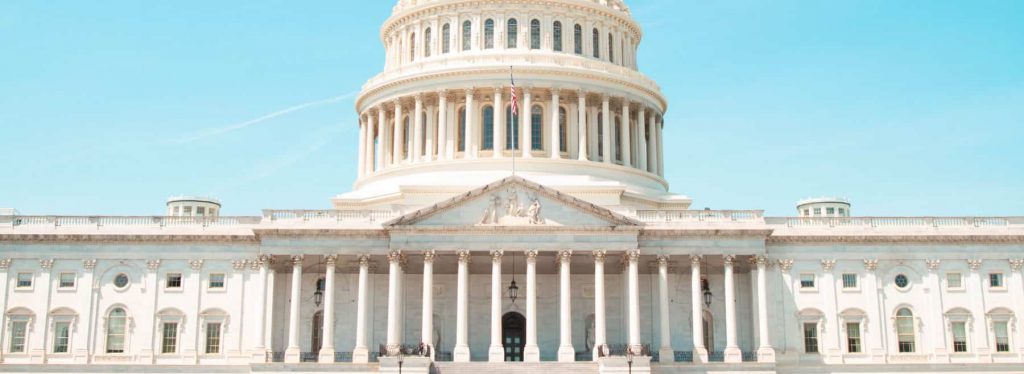In response to the pandemic, Congress authorized economic stimulus payments and favorable business loans as part of the Coronavirus Aid, Relief, and Economic Security (CARES) Act. The CARES Act also featured key tax changes. This new law follows the massive Tax Cuts and Jobs Act (TCJA) of 2017. The TCJA revised whole sections of the tax code and included notable provisions for individuals and businesses. The CARES Act modified or slowed down many of those tax changes.
Interest Limitation Rules
Before 2018, business interest was fully deductible. But the TCJA generally limited the deduction for business interest to 30 percent of adjusted taxable income (ATI). Now the CARES Act raises the deduction to 50 percent of ATI, but only for 2019 and 2020.
Business owners should determine if they qualify for a special exception. The 50 percent of ATI limit does not apply to a business with average gross receipts of $25 million (indexed for inflation) or less for the three prior years. The threshold for 2020 is $26 million.
For these purposes, ATI is defined as your business income without regard to business interest income and expense; net operating losses (NOLs); the 20 percent qualified business income (QBI) deduction; and, for tax years beginning before 2022, depreciation, amortization or depletion. Additionally, given that some businesses will not have taxable income in 2020, the company can elect to use its 2019 ATI in computing its 2020 limitation.
Net Operating Loss Rules
Corporate Net Operating Losses can be carried back up to five years for tax years 2018 through 2020. Also, there is a suspension on the 80 percent limitation to allow taxpayers to fully deduct losses incurred against prior years’ income.
New Section 461(l) provided that the amount of net business loss an individual may use in a year to offset other sources of income was capped at $250,000 (if single; $500,000 if married filing jointly). These excess business loss limitations will be suspended through December 31, 2020. This limitation unchanged would limit the individual owner of a pass-through to a $500,000 deductible loss in a given year.
Debt Deductions
During this turbulent year, many small businesses are struggling to stay afloat, resulting in large numbers of outstanding receivables and collectibles. Businesses should consider increasing collection activities now. For example, companies may issue a series of dunning letters to debtors asking for payment. Then, if you are still unable to collect the unpaid amount, you can generally write off the debt as a business bad debt in 2020.
Generally, business bad debts are claimed in the year they become worthless. To qualify as a business bad debt, a loan or advance must have been created or acquired in connection with your business operation and result in a loss to the business entity if it cannot be repaid.
We suggest businesses keep detailed records of all collection activities—including letters, telephone calls, e-mails, and collection agency efforts—in your files. This documentation can help support claiming the worthlessness of the debt if the IRS ever challenges the bad debt deduction.
Depreciation-Related Deductions
Under current law, a business may benefit from a combination of three depreciation-based tax breaks, including the section 179 deduction, bonus depreciation, and regular depreciation.
We recommend that taxpayers and property owners place qualified property in service before the end of the year. Typically, a small business can write off most, if not all, of the cost in 2020.
The Section 179 tax code allows you to expense the cost of qualified property placed in service anytime during the year. The maximum annual deduction is phased out on a dollar-for-dollar basis above a specified threshold. However, be aware that the Section 179 deduction cannot exceed the taxable income from all your business activities this year. This could limit your deduction for 2020.
We recommend coordinating this effort with your personal 1040. Claiming too much or too little in this section will create inefficient use of tax brackets.
The TCJA doubled the 50 percent first-year bonus depreciation deduction to 100 percent for property placed in service after September 27, 2017, and expanded the definition of qualified property to include used, not just new, property. However, the TCJA gradually phases out bonus depreciation after 2022. Taxpayers should carefully heed this phaseout and position their properties strategically to maximize the bonus depreciation.
Qualified Improvement Property
Qualified Improvement Property (QIP) has had a technical correction to update the depreciable life to 15 years as initially intended in the TCJA. QIP is an improvement to an interior portion of a building which is nonresidential real property. This correction makes QIP eligible for 100 percent bonus depreciation, allowing for a complete write-off of these costs in the acquisition year. Otherwise, a taxpayer would be required to depreciate these costs over 39 years.
In addition, this rule change is retroactive to the original passage of the TCJA, thus making QIP placed in service in 2018 and 2019 eligible for this tax treatment. We recommend amending previous tax returns to take advantage of these write-off costs if any QIP was placed in service in those earlier years.
Sale of Property Before Year-End
Property owners may consider selling real estate on an installment basis. For payments that occur over at least two tax years, owners can defer tax on a portion of the gain. If any sales are occurring before year-end, you may consider delaying part of cash receipt until January. This may also effectively reduce your overall tax liability, depending on your personal tax rates.
Employer Retention Credit
Many small businesses have been unable to continue regular operations during the COVID-19 pandemic. Frequently, they are facing difficult decisions concerning maintaining staff. Employers can receive a refundable quarterly payroll tax credit if the employer closed partially or fully due to government mandates or has a significant decrease in gross receipts compared to the same quarter in the prior year.
The amount of the credit is limited to 50 percent of qualifying wages paid to eligible employees. The qualifying wages are capped at $10,000 per employee, and as such, the credit is limited to $5,000 per eligible employee.
- If an employer has more than 100 employees, eligible employees only include employees that did not work during the quarter.
- If an employer has less than 100 employees, all employees are considered eligible.
Employers are ineligible for this credit if they received a Paycheck Protection Program loan.
Student Loan Benefits
Before the CARES Act, any employer contributions toward an employee’s student loans were treated as part of their wages, making them subject to income and payroll taxes for the employer and employee. Section 2206 allows employers to contribute to their employees’ student loans tax-free until December 31, 2020.
Businesses looking to maximize these tax-free contributions can contribute up to $5,250 towards an employee’s private or federal student loans. As a note, the provision only applies to loans that are held by the employees for their own education.


